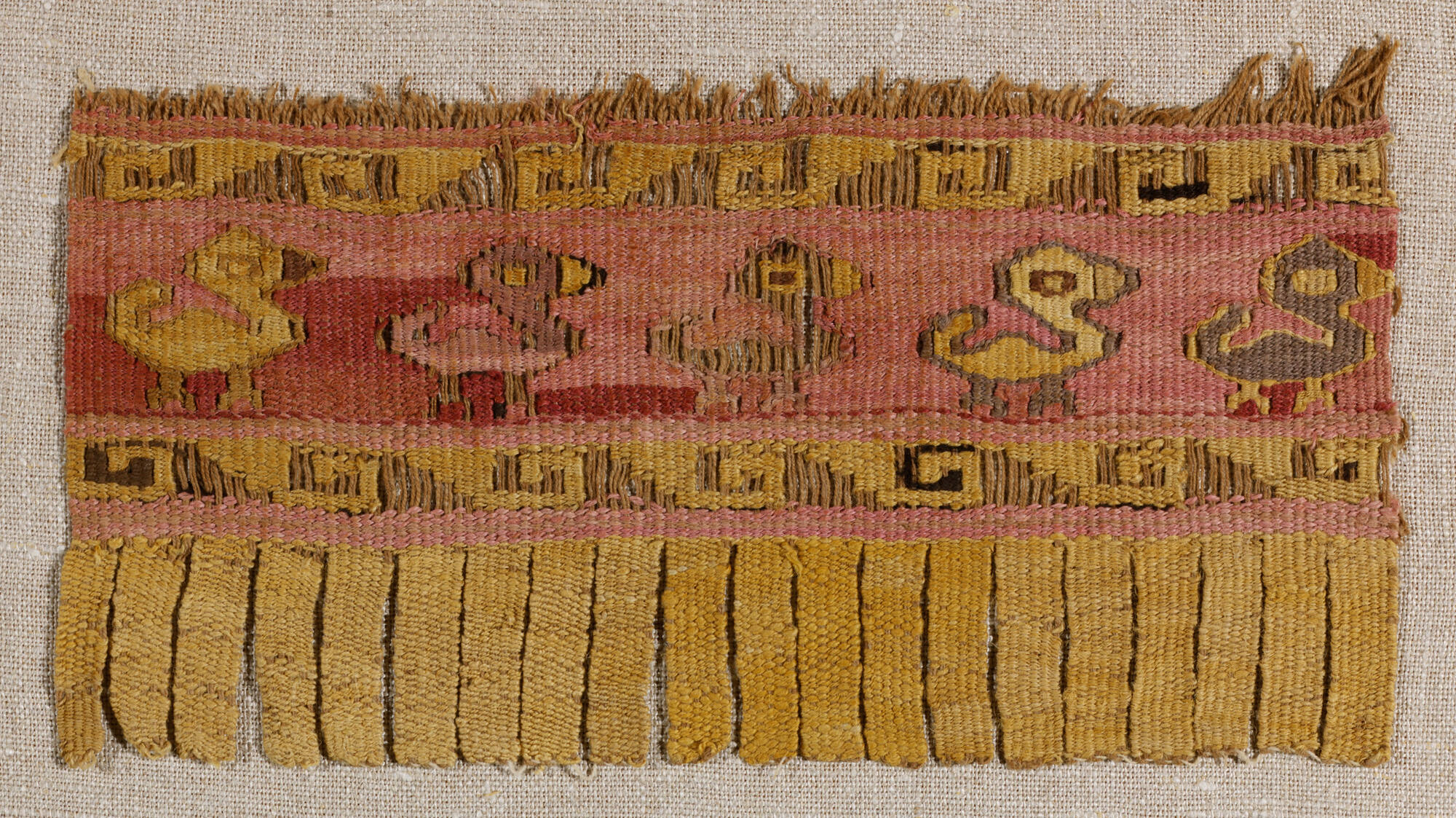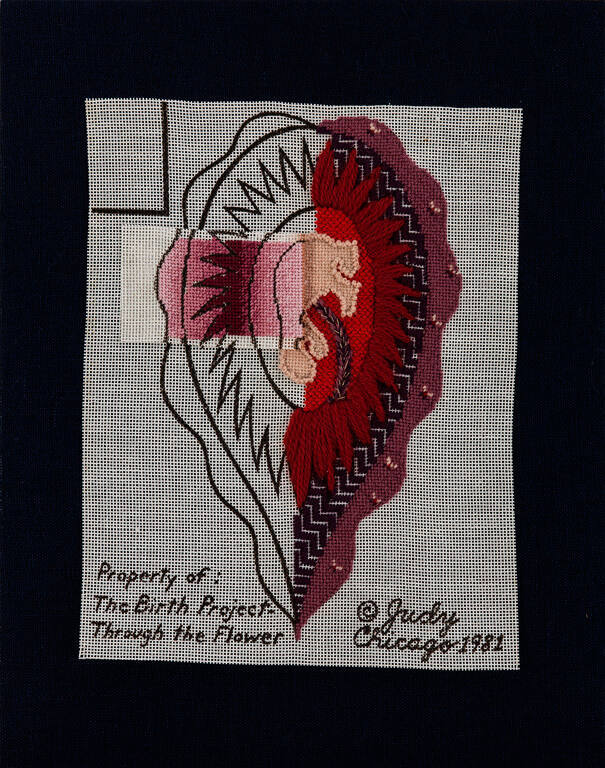
Object Details
Culture
Chimu (Peru)
Late Intermediate Period
Date
AD 1000-1470
Medium
Camelid wool on paired cotton weft
Dimensions
5 3/4 x 10 1/4 inches (14.6 x 26 cm)
Credit Line
Dr. and Mrs. Milton Lurie Kramer Collection; Bequest of Helen Kroll Kramer
Object
Number
70.164
This Chimu warp-faced tapestry border fragment depicts a row of 5 birds woven in shades of gold and (…)
This Chimu warp-faced tapestry border fragment depicts a row of 5 birds woven in shades of gold and brown on a faded red panel bordered on both the top and bottom by a series of abstract step-fret motifs orignally done in black on gold. Much of the black thread has been lost, leaving the wefts exposed. The bottom of the panel is bordered in a slit-woven tapestry “fringe,” with each fringe edge having a selvedge or finished edge to prevent raveling. The top of this textile shows evidence of having been cut from a larger garment, probably a tunic; this piece would have originally been one section of the bottom border.The colors of this piece are now faded but were probably once the vivid red of cochineal dyes, which is derived from insects living on cactus plants, coupled with some of the vegetable-derived gold colors which are made from a variety of plants found on the Peruvian coast. Wearing red and gold colors during Inca times was restricted to high-status individuals, although we cannot be certain that such sumptuary laws extended back into the pre-Inca past. Bird motifs were common along the coast of Peru, and this textile is consistent with that decorative tradition. It is extremely similar to a textile from the Ernst Frank Collection now in the Anthropology Collections housed in McGraw Hall at Cornell.












